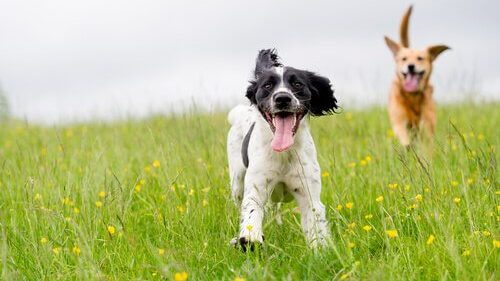Here in Michigan, there are many things to do and places to go with your pets in the winter. We want to make sure your pet is kept safe while enjoying the fluffy white snow and slippery ice.
If your pet is going on a walk or hike in snowy areas, ice balls can form between the paw pads. This is the No. 1 issue you will see with dogs who have a lot of hair between their paw pads. That hair collects the snow and forms a hard ice ball, which makes it difficult to walk, not to mention how uncomfortable this may be. You can prevent this problem by having your groomer trim the hair between the paw pads. Applying a small amount of oil to the area prior to the walk may help, too. Be sure to use an edible oil, as dogs often lick their feet and may ingest what was applied.
Another effective option is boots for pets. This may not work for all pet personalities, but for dogs that will tolerate them, boots offers the ultimate protection from the elements. You may need to work with your pet a bit to make sure he is comfortable with the boots on his paws. Start with the boots on for small periods of time and work up to using them outside. Make sure you have plenty of healthy treats handy to praise your pet for a job well done.
Salt and other ice melting granules can irritate your pet’s paws. Dogs and cats often lick their paws when wet or irritated, which can lead to possible toxicity by ingestion of the ice-melting substances.
To prevent this possible health hazard, wipe your pet’s feet when coming in from outside each time. Sand, gravel and nonclumping cat litters are the least toxic option for traction on ice and snow, but pets should not consume these products, either.
You should also wipe off your own boots so they cannot lick them, or leave them in a garage or outside. I keep a rag by the doors they use and let my dogs in one by one, wipe their paws and move on to the next one.
Use caution when using any salt or chemical deicers and look for pet-safe brands.
One of the more common injuries we see result from stepping on items obscured by snow, sharp edges on ice, and sometimes from toys and implements used to remove snow. First aid treatment is to gently cleanse the wound with warm water and a mild soap, and, if needed apply pressure, to stop bleeding.
If your pet’s paw becomes injured after being outside in the snow, we recommend bringing them in to see us as soon as possible. Timely treatment of wounds decreases the likelihood of complications and infections. Paw pads are very thick and can be slow to heal. Without treatment, they can become infected because pets’ paws touch the ground every time they walk. Some deep cuts to the paw pads can require sutures or surgical intervention for proper healing. If you have any questions or your pet has an injury, you can always call us at any time for advice.
We wish you a very happy, healthy holiday season and hope to see you and your furry babies in the New Year.
Dr. Toinette Strusinski-Broschay is the owner of Ash Veterinary Clinic in Carleton.
Original Source: http://www.voicenews.com/life/your-pet-s-paws-deserve-special-care-in-winter/article_927d0346-5e2e-516f-b33a-2c8785b456f2.html











